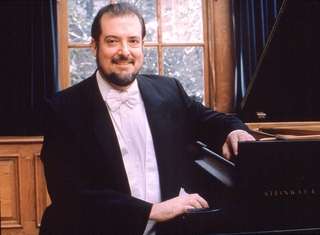|
Back
Xian Zhang’s Diverse Trio New York
Avery Fisher Hall, Lincoln Center
11/12/2009 - & November 13, 14, 17, 2009
Franz Josef Haydn: Symphony No. 95, C minor, Hob.I:95
Bohuslav Martinù : Piano Concerto No. 4, “Incantation”, H. 358
Jean Sibelius: Symphony No 1 in E minor, Opus 39
Garrick Ohlsson (Piano)
New York Philharmonic Orchestra, Xian Zhang (Conductor)

G. Ohlsson (© Philip Jones Griffiths)
An 18th Century Austro-Hungarian, a 19th Century Finn, and a 20th Century Czech walk into a bar…. of music.
Nothing links the three works of the New York Philharmonic this week, except the first Phil appearance of north China-born Xian Zhang, who energetically gave life to three difficult works from three centuries. It also brought out the always welcome Garrick Ohlsson, offering a concerto which is never associated with his repertoire, and is rarely played anywhere.
Bohuslav Martinù has the same reputation as Heitor Villa-Lobos, a composer who was so prodigious that one has suspicions that music can’t be invariably good. That, happily, is true. As Henri Bergson once said, “Only mediocre people are always at their best”, and these composers were hardly mediocre.
The Fourth Piano Concerto was played here 50 years ago. Only two movements long, its moods change with every section. Melodies try and crowd into the work, interrupted by a little cadenza, an AmerIndian war dance or some frenetic sections becoming increasingly feverish. Fortunately, it has the indelible Martinù touch of basic niceness. Even in the most hallucinatory sections of the second movement, we know that the hallucinations come from a friendly ghost.
Could the title “Incantation” have anything do to with it? That self-deprecating modest composer didn’t mean to cast a spell, but use the literal transcription of “Enchantments.” That it did under Garrick Ohlsson’s muscular playing. It was muscular when necessary, as in the last short cadenza. Otherwise, he and Xian Zhang seemed to have a good time with the many moods. Cohesive it wasn’t. But delightful it certainly was.
Like Martinù, Haydn even in his rare minor keys, seems like the nicest person around. Without the usual introduction, the work was conducted with a confident, if fairly colorless opening, and a not especially impressive second movement.
The pedestrian mood was broken by Carter Brey, The First Chair Cellist had the Minuet’s Trio all to himself against the pizzicato strings. So warm was this difficult section that Xian Zhang got into the mood for that marvelous last movement. Haydn was such an expert contrapuntalist that one rarely notices it. But here, he produced sharp canons, fugues and tiny storms, spinning all of this out of a polyphonic carpet.
The Sibelius First Symphony might sound elephantine, too massive for its materials. But it is still a work of grand climaxes, woodwind intermezzi, and naturally everybody’s second favorite drum tattoo (after Beethoven’s Seventh). Xian Zhang cued in every note, every line, with energy passion and knowledge. Like most young conductors, she was hardly a minimalist in her movements, but she pulled out all the emotional stops it deserved.
Harry Rolnick
|